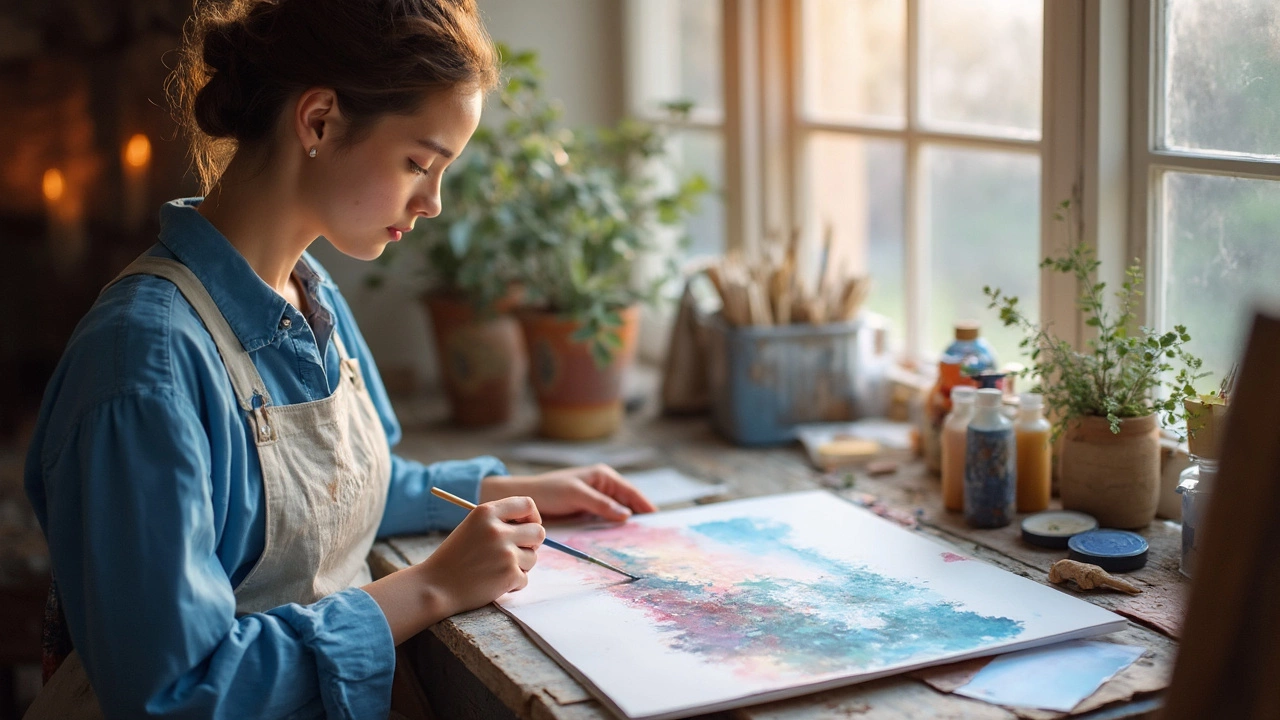Watercolor Tips: Simple Tricks to Paint Like a Pro
Did you know most beginners waste half their paint on messy washes? You don’t have to. With a few practical habits you can keep your palette clean, your paper happy, and your results looking polished from the first brushstroke.
Essential Prep Before You Paint
Start with the right paper. A cold‑press 140‑lb sheet holds water well and lets you lift colour without tearing. If you’re on a budget, cut a larger pad into smaller pages – the texture stays the same.
Next, pre‑wet the area you’ll work on. Lightly brush clean water over the space, then blot with a clean towel. This creates a smooth surface for even colour flow and prevents hard edges when the paint hits dry paper.
Mix a limited palette. Pick three primaries, a yellow‑orange, and a dark neutral. Using fewer paints forces you to learn colour mixing, and you’ll end up with more harmonious paintings. Test mixtures on a scrap corner before committing to the main composition.
Everyday Techniques that Transform Your Work
1. Wet‑on‑wet for soft backgrounds. Load a large brush with water, spread it over the pre‑wet area, then drop in pigment. Let the colours bleed into each other – the result is a dreamy gradient without hard lines.
2. Dry brush for texture. Keep the brush mostly dry and load a tiny amount of paint. Drag it across the paper to suggest grass, bark, or rough stone. The effect adds depth without extra layers.
3. Lift colour to create highlights. While the paint is still wet, press a clean, damp brush or a piece of tissue onto the area you want brighter. The pigment lifts, leaving a natural highlight that looks more authentic than painting over with white.
4. Use salt for sparkle. Sprinkle a pinch of coarse salt onto a wet wash. As it dries, the salt crystals pull pigment away, leaving tiny, bright specks – perfect for water scenes or night skies.
5. Control drying time. If you’re in a warm room, cover your painting with a plastic sheet to keep it moist longer. In a cold space, work faster or use a hair‑dryer on low to speed up drying for sharp lines.
Finally, clean your brushes properly. Rinse with water until the runoff is clear, then reshape the bristles and store them flat. A clean brush lays down paint evenly and lasts much longer.
Put these tips into your next session and you’ll see a noticeable jump in colour vibrancy, texture, and control. Watercolor is all about managing water, so the more you practice these small habits, the easier the medium becomes. Grab your brushes, prep your paper, and start experimenting – the results will speak for themselves.

3 Mar 2025
Watercolor painting is enchanting but not without its challenges, with hard lines being one of the common hurdles artists face. This article delves into practical techniques to avoid those dreaded unintentional edges. From understanding paper absorption to mastering water management, these insights will help artists create smooth transitions. Learn the essential tips and inside tricks to enhance your watercolor art.
Continue reading...
